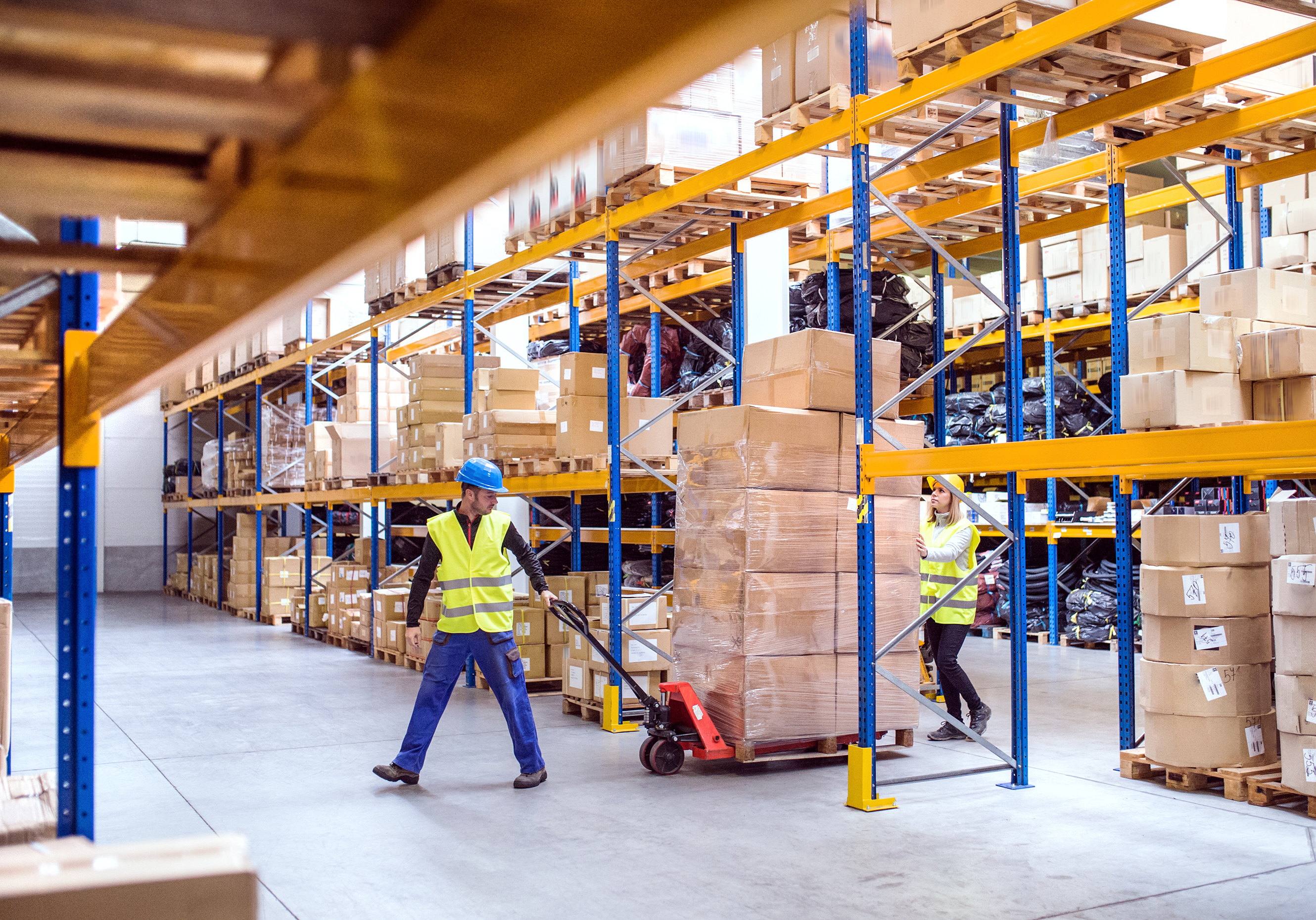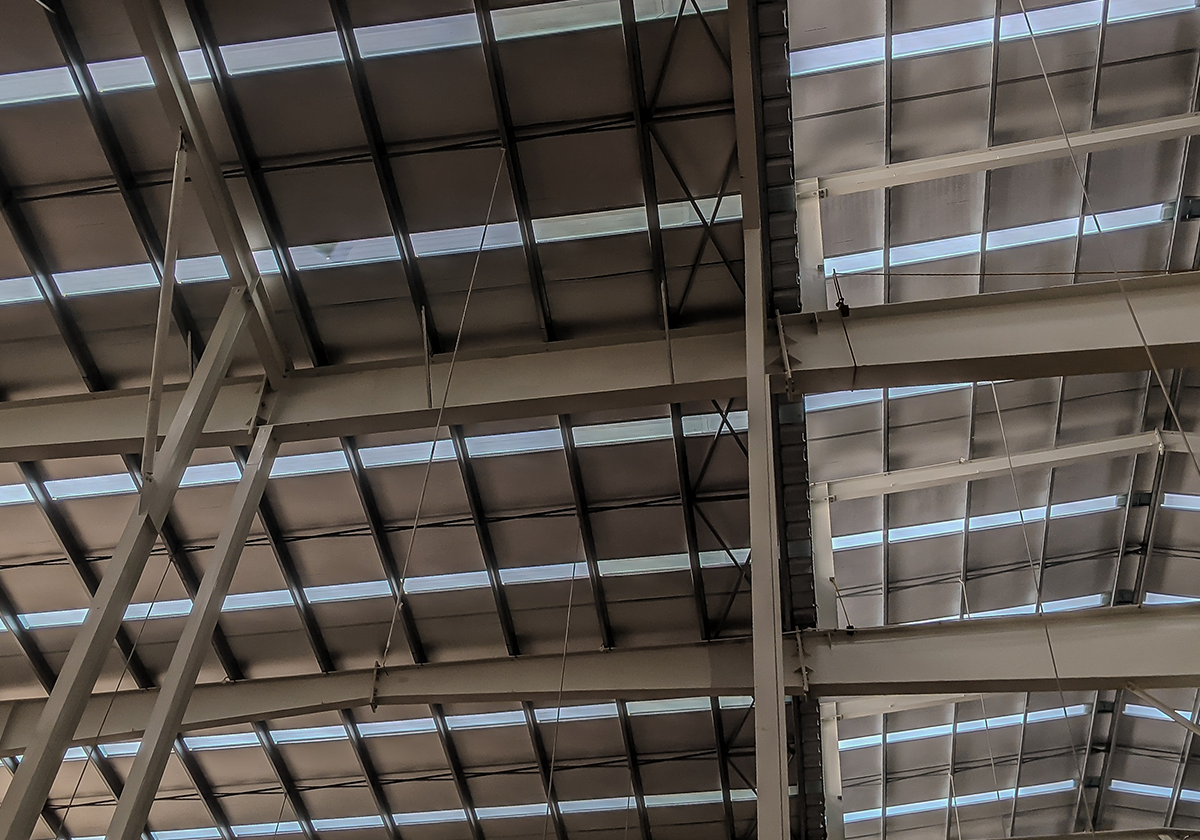Rack storage in warehousing facilities can present a complicated fire risk. From the types of products being stored to the height of the storage, many factors need to be addressed to properly understand these risks. While this is not a comprehensive guide, it will help you identify common issues with rack storage the next time you’re walking through your customer’s business.
First of all, there are several types of racks that product may be stored on.
The most common rack types
Open metal or wire racks
These have a metal grid or wire-type shelf on a rack upon which product is stored. Because the grid is open, water from a sprinkler system or fire hose can fall from the highest point at the top of the rack to the bottom or floor, depending on how much stock is stored and how closely it is stored. Heat and flames from a fire can also rise up to the top.
Solid wood racks
While the supporting structure can be (and usually is) metal, the shelf itself on this system is made of a solid piece of plywood or other wooden board. The plywood piece can be laid across two-by-fours or other supporting joists, but because the board itself is solid, water from a fire hose or sprinkler is contained to that shelf.
Open wood racks
This system is similar in construction to a solid wood rack, except the solid plywood piece is not there. The two-by-fours or other joisting members support the pallets or product being stored.
Related:
WSRB's Essential Guide to Commercial Property Risk Assessment
A few more key questions
Once you’ve identified the type of shelving system that product is being stored on, it’s time to answer a few more questions.
If products are being stored on pallets, what material are the pallets made out of?
Plastic pallets are significantly more hazardous than wooden, although they are not common in Washington state.
How is the product spaced?
It’s important to leave flue space between two racks, and space between products on a shelf. The flue space allows water from a sprinkler system to flow from the ceiling down to the fire. By blocking this space, water cannot reach it and the fire is allowed to spread and grow.
If solid shelves are used, or storage is an excessive height, is an in-rack sprinkler system installed?
Not all storage applications require in-rack sprinklers, but they are certainly useful. In-rack sprinklers have sprinkler heads and flow water to each shelf on a rack. If a fire starts near the bottom shelf, a sprinkler head is right there and able to deploy water onto the fire.
Related:
Commercial Buildings: Top 10 Risk Issues
How is the product stored on the pallet?
Palletized storage can be either encapsulated or banded. Encapsulated means the product has been wrapped in plastic around the sides and across most, or all, of the top. Banded (sometimes called enclosed) means the product has been wrapped around the sides but not across the top. Encapsulated products use more plastic and can burn much hotter than encapsulated storage, but more importantly, the plastic used makes it much more difficult for the sprinkler system to wet the cardboard boxes. Sprinklers not only cool the fire but wet products in adjacent areas making it harder for fire to spread. As a side note, it is OK for some plastic to spread over the top of the box with banded storage, but most of it should be open or cardboard.
What is being stored?
Plastic products obviously burn much hotter than concrete products, for instance, and can make a significant difference in the type of sprinkler system needed in the building. From an insurance standpoint, if a non-sprinklered warehouse storing plastics caught fire, the fire would burn much hotter and potentially cause more damage than one storing something like paper.
How much aisle space is provided?
Aisle space should be maintained in warehouses so people and equipment can easily and freely move to wherever they’re needed. If a fire starts, cluttered aisles provide means for the fire to spread from one rack to the next. This provides a much greater challenge to the sprinkler system compared to a fire that’s only in one row. It’s also much easier to get people out (and firemen in) when proper aisle space is maintained.
How high is the product being stored?
If a sprinkler system is in the building, it must be designed for storage over certain heights. If the top of the items on the tallest shelf extends over 16 feet, the sprinkler system can easily become overwhelmed and ineffective for a fire that starts near the ground. Storage that is stacked too high can affect your WSRB sprinkler grading.
Approximately how much of the building is dedicated to storage?
If more than 5% of the building is used for storage it can affect the CSP code of the building, the type of sprinkler system needed (if one is needed at all), and more.











